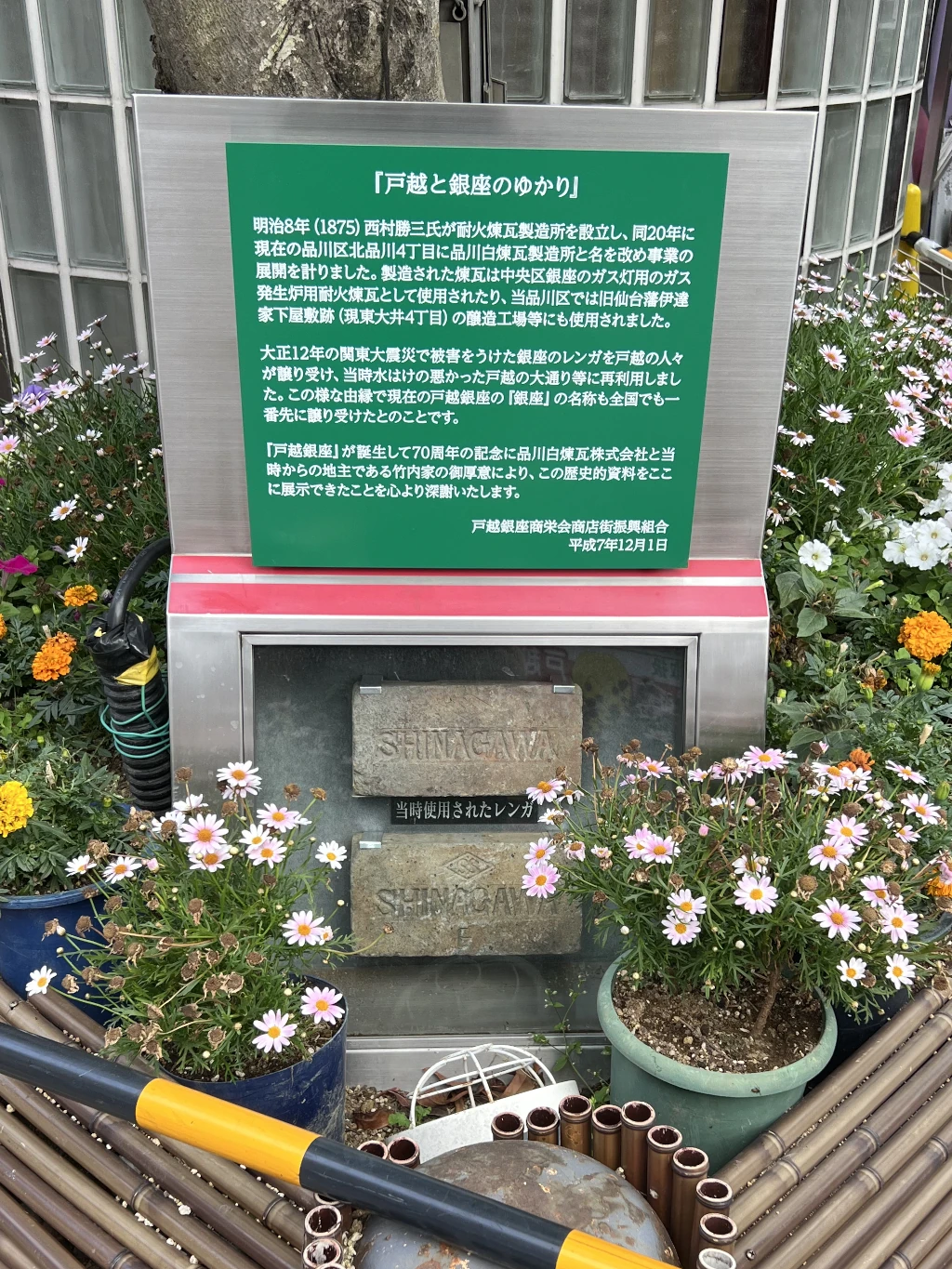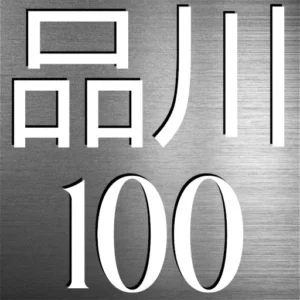🏬 Togoshi Ginza – A Local Street with a National Name
Togoshi Ginza (戸越銀座) is one of Tokyo’s most iconic neighborhood shopping streets, stretching for 1.3 kilometers through Shinagawa Ward. Known as one of the longest shōtengai (traditional shopping arcades) in the Kanto region, it is packed with over 400 shops, eateries, and local services. Despite its humble beginnings, Togoshi Ginza has earned a place in the hearts of residents and visitors alike for its nostalgic atmosphere, tasty street food, and sense of community spirit.
This bustling thoroughfare spans parts of three districts — Togoshi, Hiratsuka, and Toyocho — and connects three major shopping associations: Shoei-kai, Chuo-gai, and Ginroku-gai. Its popularity is summed up in the street’s cheerful slogan: 「遊びにおいでよ 戸越銀座」 (“Come and play in Togoshi Ginza”).
🌫️ Togoshi Ginza – Born of Fire, Earthquake and Ingenuity
The Ginza and Tsukiji areas were burned down in the Great Ginza Fire in 1872. The Meiji government promoted fireproofing of buildings as a measure against large-scale fires, and transformed the streets of Ginza into Western-style brick buildings. One of the suppliers of the fire resistant bricks for these buildings was Shinagawa Firebrick Works.
After the Great Kanto Earthquake of 1923. Merchants from Tokyo’s downtown and Yokohama, whose businesses were destroyed, relocated to this growing industrial area near Osaki. Here, they laid the foundations of what would become a thriving commercial district.
The “Ginza” part of the street’s name traces back to an act of resourcefulness and recovery. After the earthquake, Ginza — Tokyo’s premier commercial district — was repaved with asphalt, leaving heaps of brick debris. Knowing of Togoshi’s drainage issues, local merchants traveled to Ginza with handcarts and collected these bricks. They used them to pave the muddy roads of their new marketplace.
This symbolic gesture not only helped solve local infrastructure problems, but also led to the name “Togoshi Ginza,” combining the resilience of Togoshi with the prestige of Ginza. Some of those original bricks are still preserved in a plaque on the street.
🤝 A Symbol of Community and Resilience
Togoshi Ginza is made up of three shopping districts that have worked closely together to adapt and thrive:
- Togoshi Ginza Shoei-kai
- Togoshi Ginza Shopping Street (Chuo-gai)
- Ginroku Shopping Street
The 1990s bubble collapse hit the area hard, but the district recovered thanks to creative revitalization projects. Togoshi Ginza was selected in 2009 for the “New 77 Energetic Shopping Streets” by METI and also received the Energetic Town Grand Prize in 2012.
Their success lies in strong collaboration, innovative branding, and embracing both modern appeal and nostalgic charm.
🍟 What to Eat and Do
Togoshi Ginza has become a B-Class Gourmet hotspot. Don’t miss:
- Croquettes (Korokke): The street’s signature snack, promoted through joint campaigns.
- Menchi-katsu: Deep-fried minced meat cutlets
- Taiyaki: Fish-shaped cakes with sweet fillings
Its fame grew with the media, earning nicknames like “the holy land of downtown gourmet.” Visitors often stroll while eating, enjoying the mix of retro stores, modern cafes, and family-owned eateries. Mascot Togoshi Ginjirō (“Gin-chan”) adds playful character to the street.
🏓 Togoshi Ginza Today
The street sees over 10,000 visitors a day on average, rising sharply on weekends and holidays. It has become a model of urban destination tourism where the street itself is the attraction.
Visitors enjoy:
- Film screenings and parades
- Summer and seasonal festivals
- Clean, walkable pathways with underground power lines and misting systems
The area consistently ranks as a top residential neighborhood thanks to its charm, safety, and shopping convenience.
🔾 Topography and History
Togoshi Ginza lies in a gentle valley surrounded by historic slopes:
- 清水坂 (Shimizuzaka)
- 八幡坂 (Hachimanzaka)
- 富士坂 (Fujizaka)
- 平和坂 (Heiwazaka)
These slopes once made the area prone to flooding and muddy streets. As mentioned, reuse of Ginza bricks improved drainage. Local folklore links the name “Togoshi” to “Edo-goe no mura” — the village beyond Edo — from which the name “戸越” (Togoshi) may have emerged.
Nearby, the Jouju-an hermitage and Togoshi Hachiman Shrine mark spiritual roots tied to the area’s early development. A poetic stone monument in the shrine recalls this connection.
Togoshi Ginza is not just a street; it’s a story of resilience, recovery, and reinvention. A must-see for any visitor exploring Shinagawa Ward.
📍 Togoshi Ginza Visitor Information
Address: Togoshi Ginza Shopping Street, Shinagawa-ku, Tokyo
Admission: Free
Best time to visit: During the traffic restriction periods. Monday to Saturday 3:00PM–6:00PM, Sunday/Holidays 2:00PM–7:00PM
Official Site: Togoshi Ginza Shopping Street Union
Incidentally, 戸越銀座商店街 (Togoshi Ginza Shopping Street) has been trademarked.
™️ Trademark Info
Trademark: 戸越銀座商店街 (No. 6583223)
Holders: Shoei-kai, Chuo-gai, and Ginroku business cooperatives
Purpose: Retail activities for clothing, food, and daily goods in the Togoshi area
Where is it?
| what3words | ///nodded.hogs.sizing |
| latitude longitude | 35.6158, 139.71422 |
| Nearest station(s) | Togoshi Ginza Station (Tokyu Ikegami Line) Togoshi Station (Toei Asakusa Line) Osaki Station (JR and Rinkai lines, 15-min walk) Togoshi Koen Station (Tokyu Oimachi Line) |
| Nearest public conveniences | Convenience stores or Togoshi Station. There is one on the southbound platform at Togoshi Ginza Station. |
Show me a sign.

Despite the bustle, I looked and looked. Sadly, no sign could be found!
There is a brick exhibit, however…

Above a pair of “bricks used at that time”, the sign says:
The connection between Togoshi and Ginza
In 1875 (Meiji 8), Katsuzo Nishimura founded a firebrick manufacturing plant. By 1887 (Meiji 20), it had been renamed the Shinagawa Firebrick Works, located in what is now Kita-Shinagawa 4-chome. The bricks produced there were used as fireproof material for gas generators supporting Ginza’s gas lamp infrastructure in Chuo Ward. They were also used locally, including at a brewery built on the former site of the Sendai Domain’s Date family residence (present-day Higashi-Oi 4-chome, Shinagawa Ward).
After the Great Kanto Earthquake of 1923, large quantities of damaged brick from Ginza became available. The residents and merchants of Togoshi, struggling with muddy, poorly drained streets, accepted the bricks and reused them to pave their roads. This act of recovery and connection led to the naming of “Togoshi Ginza”, making it one of the earliest “Ginza-named” shopping streets in the country.
In 1995, to mark the 70th anniversary of Togoshi Ginza’s founding, a historical plaque was erected with the support of Shinagawa Firebrick Co., Ltd. and the Takeuchi family, the area’s long-time landowners. The community expressed its deep gratitude for the preservation and display of these important historical materials.
— Togoshi Ginza Shoei-kai Shopping District Promotion Association, December 1, 1995
Withervee says…
You shouldn’t have a problem finding it. Unfortunately, there isn’t a hyakkei sign to confirm that you’re in the right place. It’s not in Ginza (which is in Chūō ward). That’s your first clue. However, if you’re not sure if you’re in the right place there are massive overhead signs every 50 yards or so, and it does have a station named after it. (If you’re still having problems finding it go home and stay there. You should not leave your house.)
It’s peak “liveliness” is at the weekends. The good thing is that everything is open. And, if you like weaving in and out of people, trying to avoid cyclists and, in the morning, cars then weekend Togoshi Ginza is made for you. Otherwise, try and get there on a weekday and during the traffic restriction periods.
Togoshi Ginza is peak local Tokyo. Grab a fried snack, browse quirky shops, and bask in the chill vibes. You’ll forget you’re in the middle of a megacity.
Site Character
- Lifestyle 生活 (Seikatsu): ✔️
- Historical Significance 歴史 (Rekishi): ✔️
- Atmosphere/Natural Features 風土 (Fūdo): ✔️
Who in their right mind would vote for this?
- Local shoppers
- Street food fans
- Strolling flâneurs
- Old-school Tokyo lovers
- Anyone who can vote who has visited it.
Further reading
Togoshi Ginza Shopping Street Archives
While you’re there…
Check out Togoshi Hachiman Shrine a short walk away.

